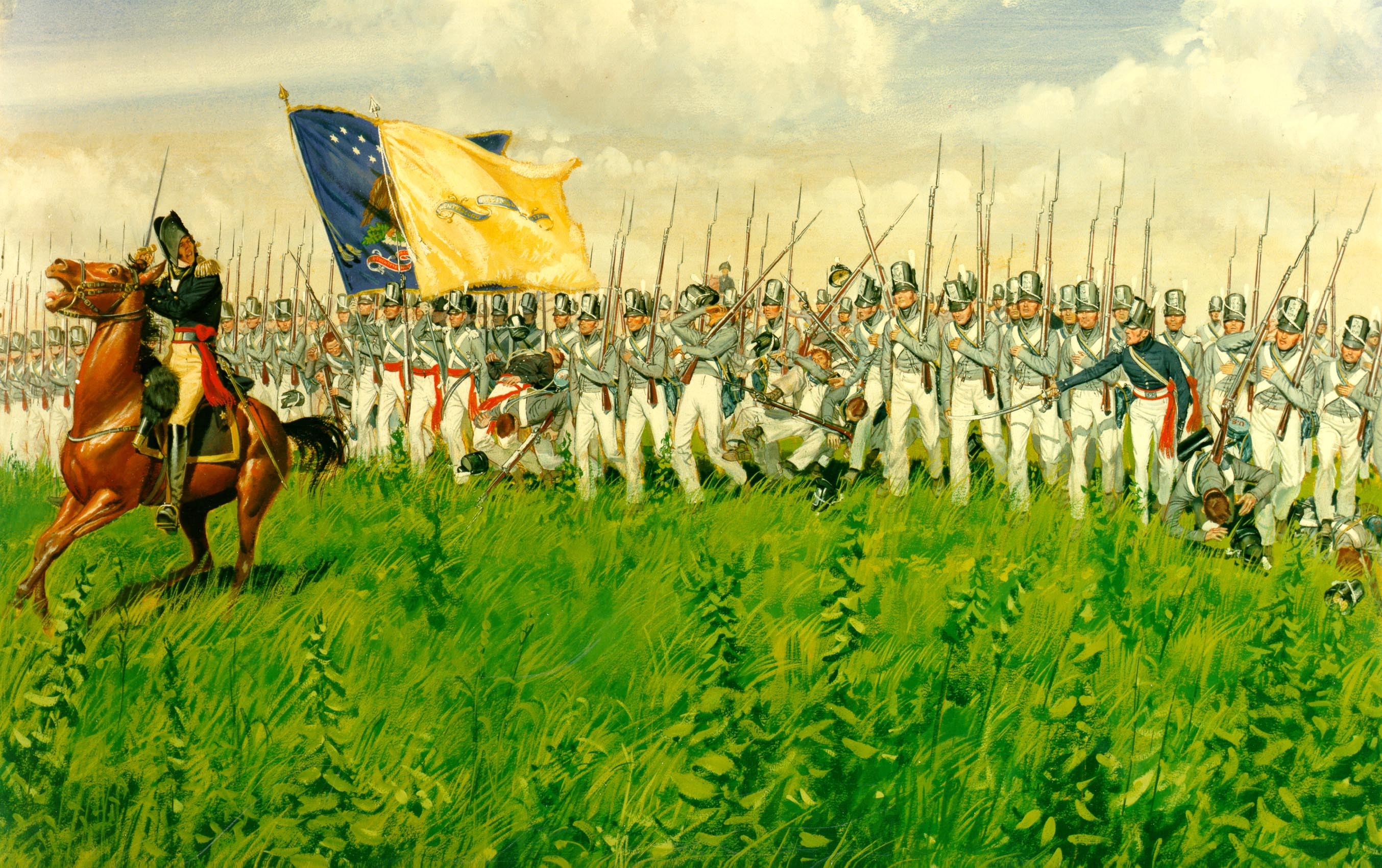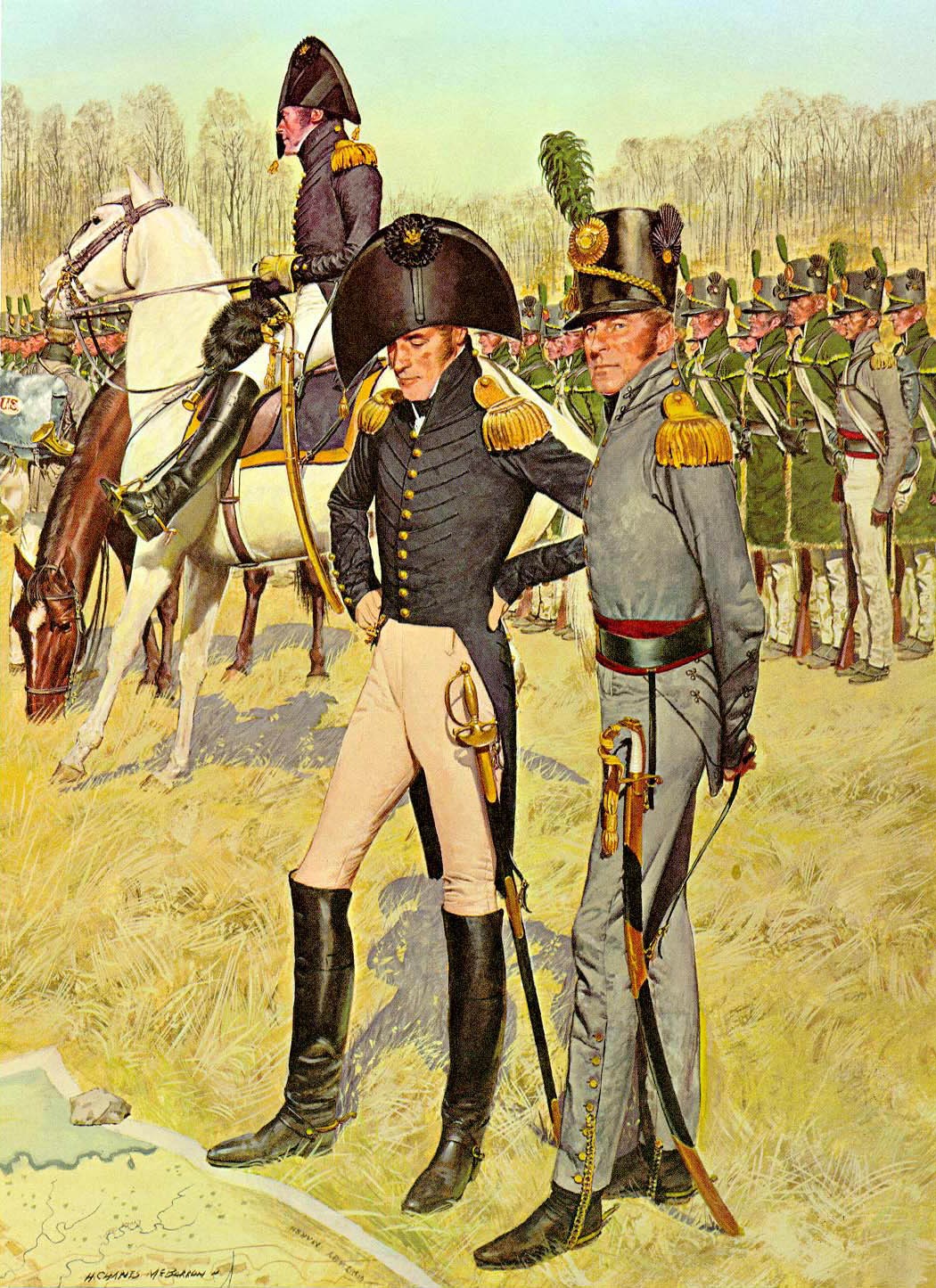The easy takeover of Canada at the beginning of the War of 1812 by "a mere matter of marching" that former President Thomas Jefferson predicted did not come to pass. Not only did three separate attacks into Canada fail, but a quantity of American territory even fell into in British hands. Early in 1813 Major General Morgan Lewis complained to the Secretary of War that the troops were untrained and that the officers were nearly so. With the emphasis that today's Army places on intensive practice and training one must remember it was not like that in the early 19th Century. Although each regiment had a designated "principal recruiting rendezvous" in place, they were merely collection points for new recruits. New soldiers rarely received any instruction before joining their units in the field. Oftentimes they arrived at the front unequipped and unprepared for immediate service. Subsequent operations revealed just how much that reality hindered success in the field. After a mediocre performance in 1813 the Army stopped actively campaigning along the Canadian frontier for the winter season and started making plans and preparations for 1814.
Major General Jacob Brown had command of what was known as the "Left Division" of the Army's 9th Military District. He delegated the task of getting the division ready for the upcoming campaigning season to newly-promoted Brigadier General Winfield Scott, who occupied himself with setting up a "camp of instruction" to get the soldiers ready for field operations. Camps such as this were not something new, as other officers had conducted them before, but its impact was important to the Army's chances of success or failure on the Niagara frontier in 1814. Troops were assembled at Flint Hill near Buffalo, New York, and on April 22 they began rigorous training. Scott was determined that the soldiers would become proficient at marching and countermarching, drilling, and conducting evolutions in the field. Early each morning squads of twelve to twenty men were drilled by their Sergeants, followed by Captains drilling their whole companies later in the morning. In the early afternoon the whole brigade was drilled for several hours under the watchful eyes of Scott. Additional drilling occasionally took place in the evenings as well. Scott was satisfied with the division's progress by early June and reduced drill time to two hours in the morning and the afternoon. Officers and soldiers were also given instruction in proper camp procedures, including sanitary precautions, which greatly cut down the cases of illness. Concerned with the health of his men, Scott even issued orders on bathing. While the division did contain a number of raw recruits it helped that most of those at the camp had already gained experience in the field during previous wartime operations. However, not all of the troops assigned to the Left Division were able to participate for the whole time that the camp was in operation. Some companies arrived during the training - or even very late. For example, half of the 23rd U.S. Infantry arrived just two days prior to the division crossing over into Canada while a few units even arrived after the campaign had already begun.
The Left Division crossed over into Canada in the early morning hours of July 3, 1814. Fort Erie was quickly taken, and on July 5 the division came head to head with a British army under the command of Major General Phineas Riall near a town called Chippewa. The British general appears to have naively assumed he faced an army largely composed of unreliable militia units due to the gray uniforms many soldiers were wearing. What he did not know was that Scott was unable to procure enough of the regular blue army uniforms for his men and he had to make do with what could be obtained. In response to a rumor that the Americans outnumbered them Riall supposedly replied that the Americans were untrained cowards who would turn and run when faced with British bayonets. Thinking he faced an easy victory, Riall soon learned otherwise, as his soldiers were forced from the field in heated battle. The performance of the U.S. Army's Left Division's soldiers supposedly prompted him to exclaim "Those are regulars, by God!" Clothes may "make the man," but training makes the soldier.
Related Links:
A Working Bibliography of MHI Sources: War of 1812--Northern Campaigns




Social Sharing